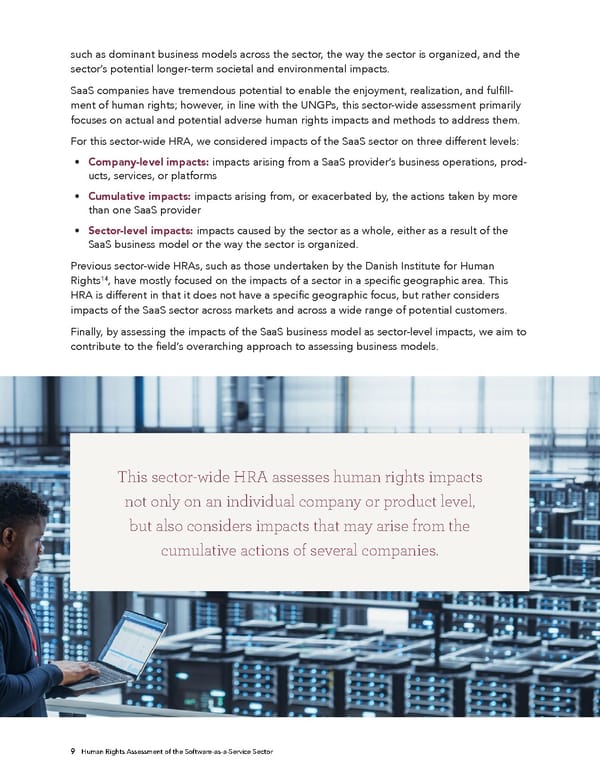such as dominant business models across the sector, the way the sector is organized, and the sector’s potential longer-term societal and environmental impacts. SaaS companies have tremendous potential to enable the enjoyment, realization, and fulfill- ment of human rights; however, in line with the UNGPs, this sector-wide assessment primarily focuses on actual and potential adverse human rights impacts and methods to address them. For this sector-wide HRA, we considered impacts of the SaaS sector on three different levels: • Company-level impacts: impacts arising from a SaaS provider’s business operations, prod- ucts, services, or platforms • Cumulative impacts: impacts arising from, or exacerbated by, the actions taken by more than one SaaS provider • Sector-level impacts: impacts caused by the sector as a whole, either as a result of the SaaS business model or the way the sector is organized. Previous sector-wide HRAs, such as those undertaken by the Danish Institute for Human 14, have mostly focused on the impacts of a sector in a specific geographic area. This Rights HRA is different in that it does not have a specific geographic focus, but rather considers impacts of the SaaS sector across markets and across a wide range of potential customers. Finally, by assessing the impacts of the SaaS business model as sector-level impacts, we aim to contribute to the field’s overarching approach to assessing business models. This sector-wide HRA assesses human rights impacts not only on an individual company or product level, but also considers impacts that may arise from the cumulative actions of several companies. 9 Human Rights Assessment of the Software-as-a-Service Sector
 Human Rights Assessment of the Software-as-a-Service Sector Page 9 Page 11
Human Rights Assessment of the Software-as-a-Service Sector Page 9 Page 11